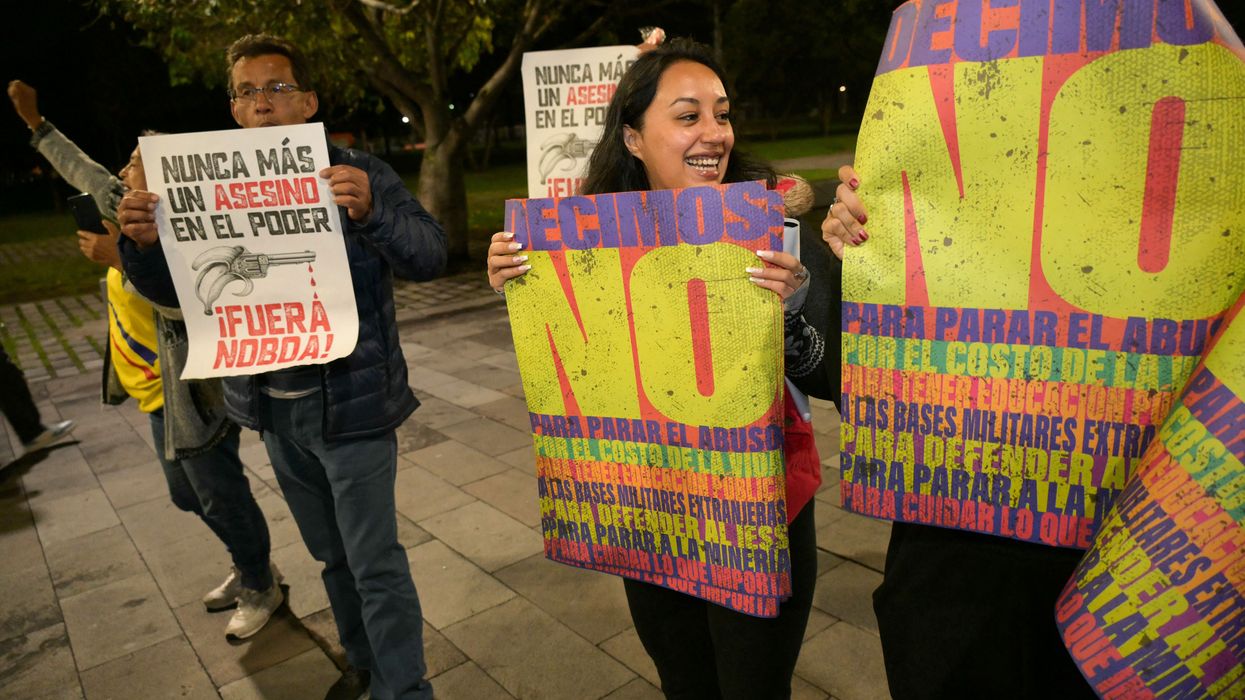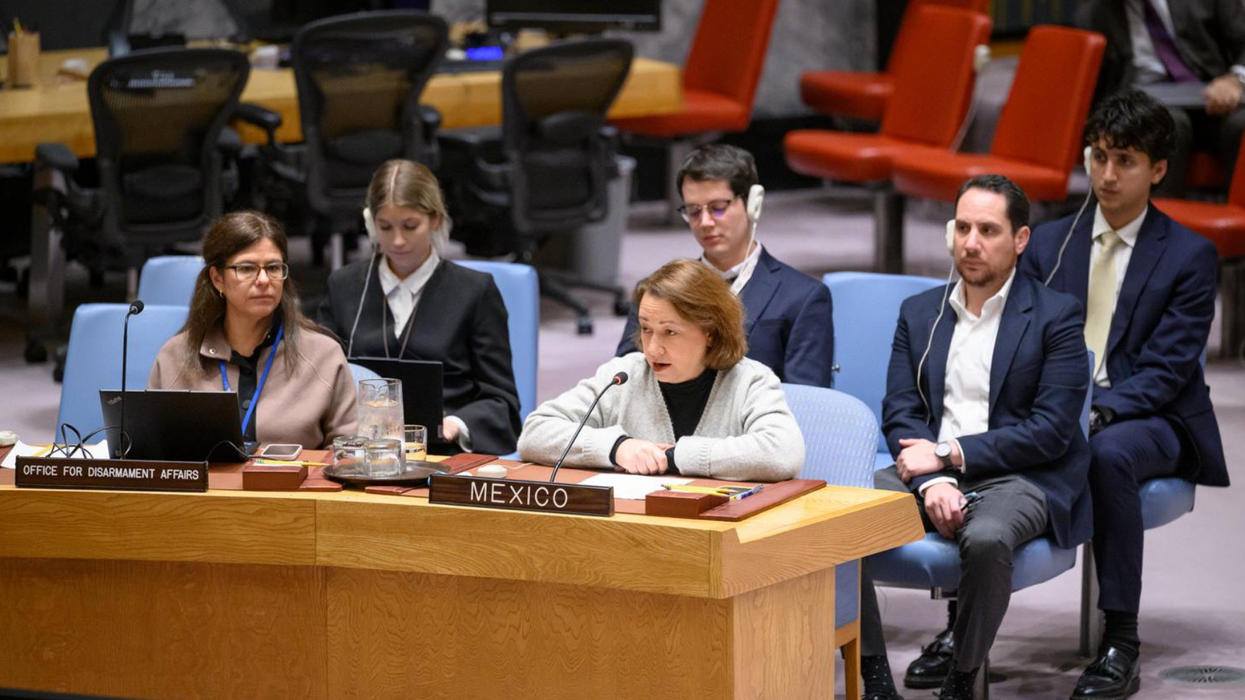The People of Ecuador Are Right: US Force Won't Stop Narco-Traffickers
The US military is not a responsible partner in addressing “bad behavior” precisely because it is engaging in seriously bad behavior itself.
Ecuador, once one of the most peaceful countries in Latin America, is now one of its most dangerous. The murder rate in 2020 was 7.7 homicides per 100,000 people. That was roughly comparable to the United States where it was 6.4 that year. In nearby Brazil, on the other hand, it was 22.3.
By 2023, Ecuador’s homicide rate had leapfrogged over its neighbors to an astounding 46 per 100,000. In a mere three years, the number of murders had increased six-fold.
The reason: narco-traffickers. Ecuador had become a convenient transshipment hub, and various gangs were warring over territory, particularly in coastal cities.
In 2023, in a presidential election that featured the assassination of one of the candidates, Ecuadorians voted in Daniel Noboa, an undistinguished but telegenic conservative politician who promised an iron-fist approach to fighting drug kingpins. His tactics boiled down to unleashing the military to attack specific gangs. However, as Tiziano Breda points out in a report for ACLED, “The same measures that contributed to reining in violence in the first months of 2024—increased military pressure in prisons and on the streets—had the unintended consequence of further fostering intra-gang power struggles and fragmentation.”
Even in a country where people are dying left and right, voters overwhelmingly opposed any outside military intervention to address the problem of narco-traffickers.
As a result, homicides in Ecuador have superseded even the totals for 2023, with the expected rate rising to 50 per 100,000 in 2025.
All of which makes the result of the recent referendum all the more remarkable.
Last week, Ecuadorians rejected all four of the proposals coming from the Noboa government. In addition to preserving the “rights of nature” provision of their constitution—by rejecting a constitutional overhaul—Ecuadorians said no to foreign military bases. The Trump administration was practically salivating at the prospect of returning to a US base in Ecuador that the military had been kicked out of in 2009 when then-president Rafael Correa let the lease expire.
Even in a country where people are dying left and right, voters overwhelmingly opposed any outside military intervention to address the problem of narco-traffickers. The national government’s own militarized response has failed. Voters reasoned that US intervention would only make things worse.
It’s a powerful statement of popular sovereignty at a time of executive overreach (by Noboa) and an expanded war on drugs (by President Donald Trump). “We respect the will of the Ecuadorian people,” Noboa commented on X when the results had come in.
Trump, however, has shown no interest in respecting the will of any people.
Plan Mexico
The Trump push for regime change in Venezuela is only part of a larger effort to expand the US military footprint in the Western hemisphere. With Venezuela, Washington is moving against an adversary of 25 years.
With Mexico, however, Washington is confronting an ally of even longer standing. In the past, the United States has assisted Mexican army and police in their battle with drug lords. Direct intervention is something different. Given opposition from the Mexican government, Trump is planning to operate independently in the country.
According to administration sources:
Under the new mission being planned, US troops in Mexico would mainly use drone strikes to hit drug labs and cartel members and leaders, the two current US officials and two former US officials said. Some of the drones that special forces would use require operators to be on the ground to use them effectively and safely…
It seems likely that the administration will wait to see how the operation in Venezuela proceeds before initiating something in Mexico.
Meanwhile, Mexico has agreed to conduct its own interdiction of suspected drug shipments at sea. It’s a marriage of convenience: Mexico wants to prevent the Trump administration from indiscriminately attacking ships in the waters off the country, and Trump wants countries in the region to shoulder more of the burden of this “drug war.”
This is how Trump’s former secretary of defense Mark Esper applies lipstick to this particular pig:
The United States is sending a clear signal that it will not tolerate bad behavior in its hemisphere. While some measures are controversial, if not legally dubious, they are part of a broader truth: Regional security demands not only American strength and focus, but also shared action and responsibility by our partners.
Certainly, countries in the region could do a better job dealing with narco-traffickers. But this is a question of law enforcement, not lawbreaking. The US military is not a responsible partner in addressing “bad behavior” precisely because it is engaging in seriously bad behavior itself. The strikes against boats around Venezuela amount to extrajudicial murder, and those executing the policy might one day face indictment by the International Criminal Court. Any intervention in Mexico, against that government’s expressed wishes, would be a violation of sovereignty no different (in kind) from Russia’s “self-defense” rationale for invading Ukraine.
Trump’s Larger Strategy
Trump wants complete freedom of movement in this hemisphere. It’s not exactly a sphere-of-influences approach, since he frankly wants access, minerals, and privileged trade relations everywhere.
But Latin America is close, and the United States has a rich and noxious history of intervention in the region on which Trump can build. His administration has been beefing up its military presence in Puerto Rico as a staging area. In Panama, it established over the summer a new jungle warfare school at a US military base abandoned 25 years ago. According to ABC News:
By August, the military had set up the “Combined Jungle Operations Training Course” with Marines and Panamanian forces training as part of a pilot program. A military spokesperson said there have since been 46 graduates of the three-week course: 18 Marines, one Army soldier and 27 personnel from Panama’s National Aeronaval Service, National Border Service and National Police.
Last month, the United States began stationing combat aircraft in El Salvador. Because of Trump’s immigration policies, the Honduran government threatened to close down the US military base that hosts the Southern Command. But that hasn’t stopped US forces from creating a new Combined Joint Operation Center at the base to coordinate with the Honduran military and other entities.
The military is only a means to an end—of transforming the politics of the hemisphere. Trump has lavished $20 million to support his buddy Javier Milei, the far-right leader in Argentina, a cash infusion that gave his party a boost in the midterm elections last month. Trumps has tried to use additional tariffs to keep his Brazilian buddy Jair Bolsonaro out of jail for his attempted coup, presumably so that he could return to power just the way Trump has. He hosted Daniel Noboa at Mar-a-Lago before the Ecuadorian election last spring to convey the message that the conservative politician had the ear of the American president. Trump wants Xiomara Castro’s successor to lose the elections in Honduras at the end of the month, the far-right Jose Antonio Kast to dislodge the left in Chile’s presidential runoff next month, and a comparable rightist to replace Gustavo Petro in Colombia next year.
If Trump hates having a democratic socialist, Zohran Mamdani, in his backyard of New York, it’s even worse to have them leading countries in America’s backyard of Latin America. The “drug war”—on top of the deportation of hundreds of thousands of Venezuelans, Hondurans, and Ecuadorians—is a lever that the United States can use to impose MAGA throughout Latin America. More money and power for militaries in the region increase the likelihood that generals there will revive the “good old days” when coups were commonplace.
The United States has an addiction problem—opioids, cocaine, meth—that has been driving supply. Having slashed addiction treatment funding and contributed to worsening the economic conditions that fuel addiction, Trump is now entirely focused on the quixotic mission of suppressing this supply.
The president, too, has addictions far more dangerous than fast-food burgers. He is addicted to the expansion of US power and the consolidation of his own. He won’t voluntarily seek treatment. Only the voters can force him into rehab.


